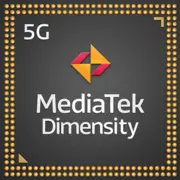MediaTek Dimensity 1050

MediaTek Dimensity 1050: Balancing Performance and Affordability in 2025
Overview of the mid-range smartphone mobile processor
Introduction
By 2025, the mobile processor market continues to evolve, providing users with more options even in budget segments. The MediaTek Dimensity 1050, introduced in 2024, remains a relevant solution for those seeking an optimal price-performance ratio. In this article, we will explore what distinguishes this SoC, how it handles modern tasks, and who it is suitable for.
1. Architecture and Process Technology: The Basis of Efficiency
Cores and Frequencies
The Dimensity 1050 is built on a hybrid architecture with 8 cores:
- 2 high-performance Cortex-A78 cores with a clock speed of up to 2.5 GHz for resource-intensive tasks.
- 6 energy-efficient Cortex-A55 cores with a clock speed of 2.0 GHz for background processes.
This approach provides a balance between speed and battery life. The 6 nm process technology (TSMC N6) is not the most advanced in 2025, but it remains cost-effective and reduces heat generation.
Graphics Accelerator
The Mali-G610 MP3 GPU with three compute units supports:
- API Vulkan 1.3, OpenCL 2.0;
- Displays with refresh rates up to 144 Hz;
- Game rendering at resolutions up to FHD+ (1080p).
While the Mali-G610 MP3 lags behind top GPUs, it is optimized for smooth performance in mobile gaming and video processing.
2. Performance in Real-World Scenarios
Gaming
- Genshin Impact: medium settings (30–40 FPS), without overheating.
- PUBG Mobile: Ultra HD + 60 FPS.
- Honkai: Star Rail: medium settings, stable 50 FPS.
Important: A smartphone with a cooling system (vapour chamber or graphite film) is necessary for comfortable gaming.
Multimedia
- Video decoding: 4K@60fps (H.265, AV1);
- Video recording: 4K@30fps with EIS (electronic stabilization);
- Support for Dolby Atmos and Hi-Res Audio.
AI Applications
The built-in APU 3.0 accelerates:
- Photo processing (noise reduction, HDR);
- Real-time object recognition;
- Voice assistants (power-saving background mode).
Power Consumption and Thermal Management
The 6 nm process technology and dynamic load distribution (CorePilot 4.0) allow:
- A 15% reduction in power consumption compared to Dimensity 920;
- Battery life of up to 8–10 hours with active usage.
However, during prolonged gaming sessions, temperatures can rise to 42–45°C, necessitating quality cooling within the device case.
3. Integrated Modules: Communication for the Future
5G Modem
- Supports Sub-6 GHz (up to 2.77 Gbit/s);
- Compatibility with NSA/SA networks;
- Dual SIM 5G (simultaneous operation of two cards).
Wi-Fi and Bluetooth
- Wi-Fi 6E (up to 3.6 Gbit/s) with improved stability in crowded networks;
- Bluetooth 5.3 with support for LE Audio and Multipoint.
Navigation
- GPS, GLONASS, Galileo, BeiDou;
- Lack of support for satellite communication (as seen in iPhone 14/15), which is typical for the sub-$500 segment.
4. Comparison with Competitors
MediaTek Dimensity 1050 vs Snapdragon 7 Gen 2
- CPU: Snapdragon 7 Gen 2 (4 nm) is 10% faster in single-threaded tasks due to Cortex-X1.
- GPU: Adreno 662 vs Mali-G610 MP3 — parity in mid-level gaming.
- Energy efficiency: Snapdragon wins with its 4 nm process technology.
Dimensity 1050 vs Exynos 1380
- Exynos 1380 (5 nm) is stronger in AI tasks but lags in multi-threading.
- Both chips are similar in price, but the Dimensity 1050 is more commonly found in global models.
2025 Market
- In budget flagships ($400–600), the Dimensity 1050 competes with Snapdragon 7+ Gen 3 and Tensor G3, offering a better price-to-performance ratio and 5G support.
5. Use Cases
Gaming
Suitable for:
- Casual games (COD Mobile, Among Us);
- Medium settings in AAA titles with adequate cooling.
Everyday Tasks
- Smooth operation with social media, streaming, multitasking (up to 10 tabs in Chrome).
Photo and Video
- Shooting with sensors up to 108 MP;
- 4K recording with noise reduction;
- Portrait, Night, and Pro modes with AI correction.
6. Pros and Cons
Advantages
- Affordable device prices ($300–450);
- Support for current communication standards (Wi-Fi 6E, 5G);
- Good optimization for mobile gaming.
Disadvantages
- The 6 nm process lags behind 4 nm competitors;
- Limited GPU performance for top-level games;
- Lack of mmWave 5G and satellite communication.
7. Practical Tips for Choosing a Smartphone
- Cooling: Look for models that mention “Liquid Cooling” or “VC Chamber.”
- Display: Ideally — AMOLED 90–120 Hz for gaming and video.
- Battery: 5000 mAh + fast charging of 33 W and above.
- Cameras: Sony IMX766 or Samsung ISOCELL GW3 sensors will deliver better results.
Popular Models of 2025
- Xiaomi Redmi Note 14 Pro ($349);
- realme 11X 5G ($379);
- POCO X6 Neo ($299).
8. Final Conclusion: Who Is the Dimensity 1050 Suitable For?
This processor is the ideal choice for:
- Budget gamers who are willing to compromise between graphics and FPS;
- Students and active users who value battery life and a smooth interface;
- Travelers who require stable 5G connectivity and GPS.
Main Benefits:
- Access to 2025 technologies without overpaying;
- Reliable performance in typical scenarios;
- Long support for updates (Android up to version 16).
If you are not ready to spend $700+ on a flagship but want modern functionality, the Dimensity 1050 will be a reasonable compromise.
Basic
6x 2 GHz – Cortex-A55
GPU Specifications
Connectivity
Memory Specifications
Miscellaneous
Benchmarks
Phones with Dimensity 1050

Comparison of Devices with Dimensity 1050
Compared to Other SoC
Share in social media
Or Link To Us
<a href="https://cputronic.com/soc/mediatek-dimensity-1050" target="_blank">MediaTek Dimensity 1050</a>